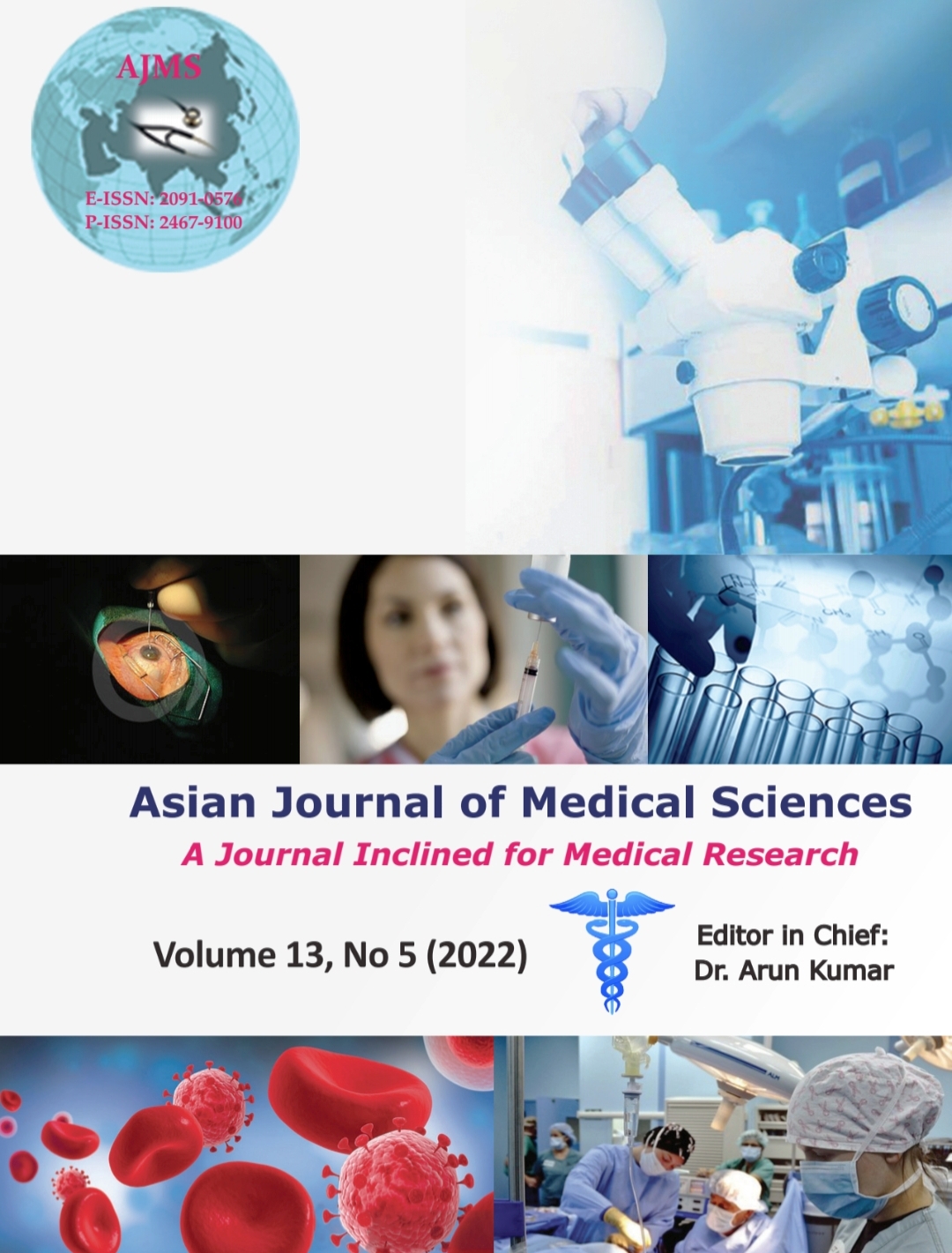Bacteriological profile and antibiotics sensitivity patterns among neonates admitted at Birat Medical College Teaching Hospital
Keywords:
Blood culture, Neonatal sepsis, NeonatesAbstract
Background: Neonatal sepsis still remains serious and potentially life-threatening events with a mortality rate of up to 50%. The current practice of starting empirical antibiotic therapy in all neonates showing infection-like symptoms results in their exposure to adverse drug effects, nosocomial complications, and in the emergence of resistant strains. The antibiotic sensitivity pattern of organisms is changing very rapidly over a short period which is varying from country to country, one place to another, and one institute to another. Therefore, periodic evaluation of sensitivity patterns is essential for rational and appropriate use of antibiotics.
Aims and Objectives: This study aims to see bacteriological profile and their antibiotics sensitivity among the sepsis suspected neonates at the neonatal intensive care unit of Birat Medical College Teaching Hospital (BMCTH).
Materials and Methods: It was a cross-sectional descriptive study from July 21, 2021, to December 21, 2021. Sample size of 138 was included in the study. Neonates were selected by non-probability consecutive sampling techniques. Neonatal sepsis suspected neonates and plan to treat with injectable antibiotics by the treating pediatrician were included in the study. All patients included were started on empirical antibiotics after drawing samples for blood cultures and CRP along with other investigations. Bacteriological profile and their sensitivity to different antibiotics were collected from blood culture reports. Data collection was done using a specifically designed questionnaire. The descriptive and inferential statistics were used for data analysis. The test of significance was done by the Chi-square test. P<0.05 was considered statistically significant.
Results: Among the 46 blood culture-proven sepsis, the most common organism isolated was Staphylococcus aureus which was 33 (71.7%). Among the isolated S. aureus, 100% were sensitive to colistin sulfate and injectable linezolid, 93.1% sensitive to injectable meropenem, 85.7% sensitive to injectable piperacillin and tazobactam combination, 83.3% sensitive to injectable vancomycin, and 85.7% sensitive to injectable amikacin but only 40.7% to injectable cefotaxime. Isolated Acinetobacter species were found 100% sensitive to colistin sulfate and meropenem, and 80% sensitive to cefotaxime and amikacin but only 66.7% sensitive to injectable piperacillin and tazobactam combination. Only one neonate had Klebsiella isolated in blood culture which was 100% resistant to injectable cefotaxime but was sensitive 100% to Meropenem, piperacillin-tazobactam, and amikacin. Isolated Enterococcus species were 100% sensitive to piperacillin-tazobactam combination, meropenem, and imipenem but only 66.7% sensitive to injectable cefotaxime.
Conclusion: Gram-positive isolates were the predominant pathogens among enrolled neonatal sepsis suspected neonates at Birat medical college teaching hospital (BMCTH). Based on our findings, a combination of cefotaxime and amikacin can be used as first-line therapy. However, cefotaxime only had moderate sensitivity, so change to piperacillin-tazobactam and vancomycin or linezolid as second-line therapy can be considered early in case of no improvement or deterioration, or combination of vancomycin and meropenem as third line would be the appropriate empirical therapy at BMCTH. However, the use of the broad-spectrum antibiotics as empirical therapy should be evaluated in the long run and should be used cautiously and modified to narrow spectrum antibiotics, as guided by the culture and susceptibility report at the earliest possible.
Downloads
Downloads
Published
How to Cite
Issue
Section
License
Copyright (c) 2022 Asian Journal of Medical Sciences

This work is licensed under a Creative Commons Attribution-NonCommercial 4.0 International License.
Authors who publish with this journal agree to the following terms:
- The journal holds copyright and publishes the work under a Creative Commons CC-BY-NC license that permits use, distribution and reprduction in any medium, provided the original work is properly cited and is not used for commercial purposes. The journal should be recognised as the original publisher of this work.
- Authors are able to enter into separate, additional contractual arrangements for the non-exclusive distribution of the journal's published version of the work (e.g., post it to an institutional repository or publish it in a book), with an acknowledgement of its initial publication in this journal.
- Authors are permitted and encouraged to post their work online (e.g., in institutional repositories or on their website) prior to and during the submission process, as it can lead to productive exchanges, as well as earlier and greater citation of published work (See The Effect of Open Access).




